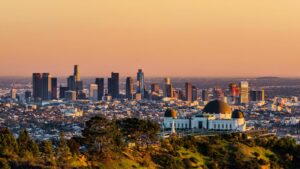Los Angeles stands as a vibrant mosaic of architectural styles, reflecting its rich history and diverse cultural influences. From the iconic Spanish Colonial Revival to the sleek lines of Mid-Century Modern, the city’s buildings tell stories of innovation and tradition. Each neighborhood offers a unique glimpse into the architectural evolution that has shaped LA’s urban landscape.
Strolling through LA, one can witness the seamless blend of old and new. The historic theaters of Downtown echo the grandeur of the past, while contemporary marvels like the Walt Disney Concert Hall showcase cutting-edge design. This dynamic mix makes Los Angeles a living museum of architectural ingenuity, inviting both residents and visitors to explore its ever-evolving skyline.
Architectural Styles in Los Angeles
Los Angeles boasts a rich architectural history, reflecting its diverse cultural influences and constant evolution. The city’s origins trace back to the Spanish era when settlers constructed adobe homes characterized by thick walls and flat roofs. Early examples, such as the Avila Adobe built in 1818, showcase these traditional styles.

In the late 19th century, the arrival of the Southern Pacific railroad opened the city to new influences. Victorian architecture became prominent, with ornate details and intricate woodwork. Homes in neighborhoods like Angelino Heights display these elements vividly.
The early 20th century saw the rise of the Arts and Crafts movement, with renowned architects like Greene and Greene leading the way. The Gamble House, completed in 1909, epitomizes this style with its handcrafted details and integration with nature.Contemporary styles in Los Angeles encompass a blend of innovative designs and modern aesthetics, often reflecting technological advancements and environmental considerations. These styles promote functionality and aesthetic appeal through various architectural elements.
Art Deco
Art Deco architecture, popular in the 1920s and 1930s, left a significant mark on Los Angeles’ architectural landscape. This decorative style is characterized by its use of geometric shapes, vibrant colors, and lavish ornamentation.
Art Deco buildings in Los Angeles often feature zigzag patterns, strong vertical lines, and stylized floral motifs. They typically use materials such as steel, aluminum, and stucco, with surfaces that may be accented by glass and marble. These structures often have stepped facades or setbacks that create a tiered appearance.
- Bullocks Wilshire (1931): This former department store features a copper tower, glass decorations, and a lavish interior.
- Eastern Columbia Building (1930): Known for its turquoise terra cotta exterior, this building has distinctive clock faces on its facade.
- Los Angeles City Hall (1928): This monumental structure is capped with a distinctive pyramid-shaped top, combining traditional and modern elements.
- Wiltern Theatre (1931): Noted for its detailed tile work and green terra cotta facade, it remains a prominent entertainment venue.
Mid-Century Modern
Mid-Century Modern architecture emerged in Los Angeles post-World War II, characterized by clean lines and a lack of ornamentation. This style focused on integrating indoor and outdoor spaces, highlighting functionality.
Key characteristics of Mid-Century Modern architecture include large glass windows, flat planes, and open floor plans. These buildings often use steel and plywood materials. Rooflines are typically flat or slightly pitched. Indoor spaces blend seamlessly into outdoor areas. Minimal decoration and an emphasis on simplicity define the aesthetic.
Notable Examples
Notable examples of Mid-Century Modern architecture in Los Angeles include the Eames House, designed by Charles and Ray Eames in 1949. The Stahl House, designed by Pierre Koenig in 1959, is another iconic structure. Richard Neutra’s Lovell House, completed in 1929, is an earlier example showcasing many elements of this style. The Chemosphere by John Lautner, built in 1960, exemplifies innovative engineering with its octagonal shape and elevated position.
Mission Revival architecture, popular from the late 19th century to the early 20th century, draws inspiration from California’s Spanish missions. This style reflects historical heritage and is prominent in various Los Angeles neighborhoods.



